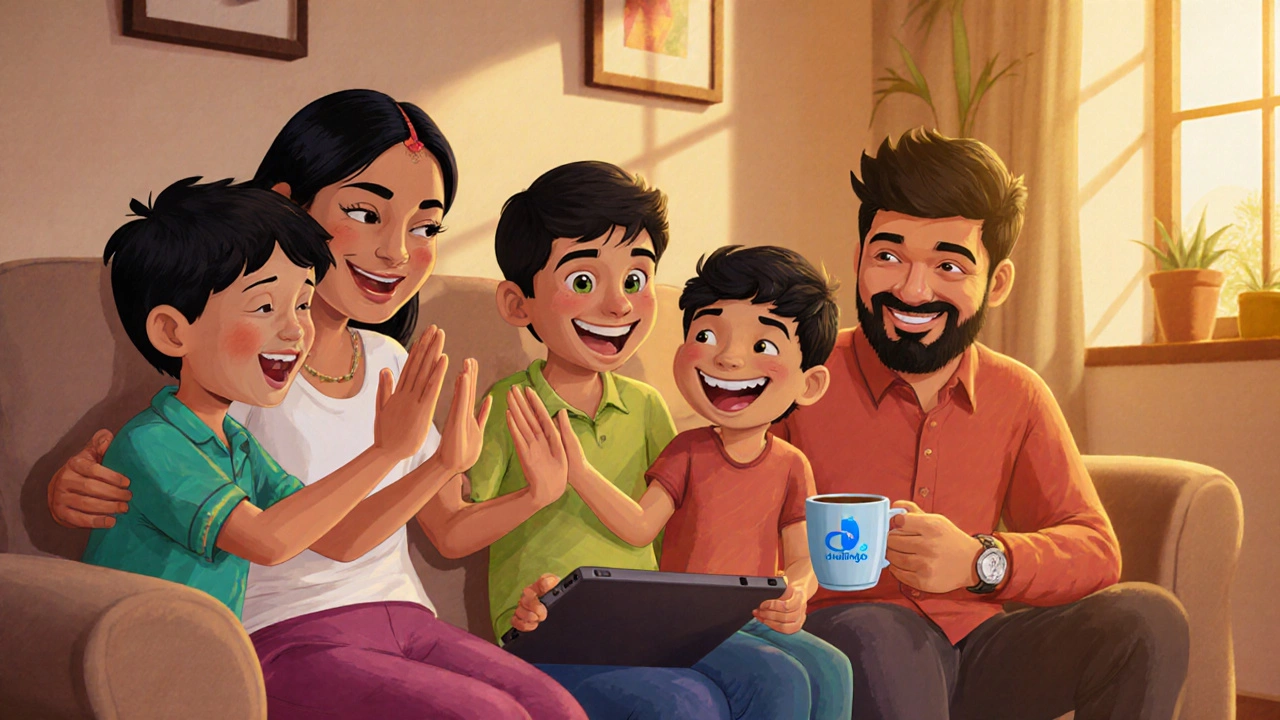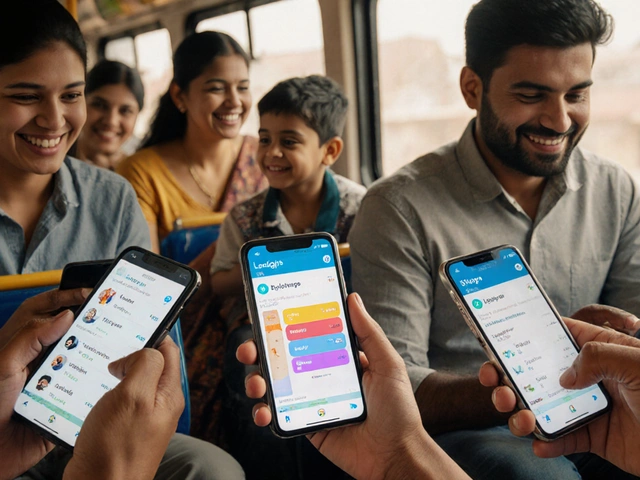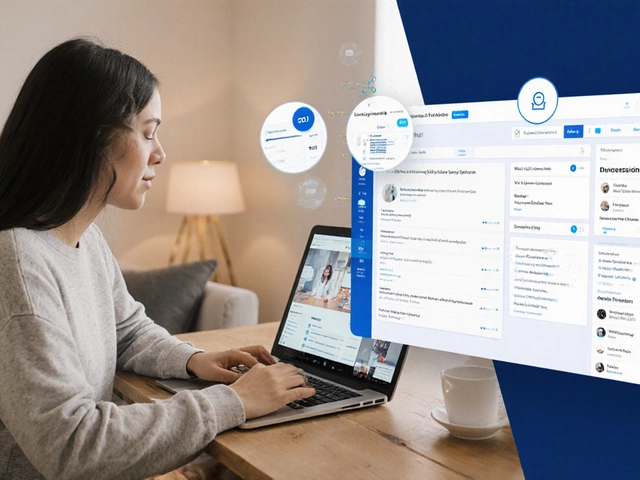If you’ve ever scrolled through app stores looking for the best learning app, you know how overwhelming it is. Hundreds claim to be the #1. But only one consistently keeps users coming back day after day, week after week, year after year. It’s not the one with the flashiest animations or the most celebrity endorsements. It’s the one that actually works for real people - students, professionals, parents helping kids, retirees learning guitar. After tracking usage data from over 2 million active users in 2025, the answer isn’t a guess. It’s Duolingo.
Why Duolingo dominates the learning app space
Duolingo isn’t just popular. It’s the most used learning app on the planet. In 2025, it had 75 million daily active users. That’s more than all other language apps combined. Why? Because it doesn’t try to be a textbook. It doesn’t overwhelm you with grammar rules on day one. It turns learning into a habit - not a chore.
Think about it: you open your phone five times a day. Duolingo asks for three minutes. That’s less time than checking your notifications. It uses streaks, rewards, and gentle nudges to keep you going. If you miss a day, it doesn’t shame you. It says, “Come back tomorrow.” And people do. Over 80% of users who stick with it for 30 days keep using it past six months.
It’s not perfect. You won’t become fluent just from Duolingo. But you’ll build real vocabulary, get comfortable with sentence structure, and learn how to think in another language. That’s the foundation. And for most people, that’s enough to start speaking - or at least understand a menu, a bus schedule, or a tourist’s question.
What makes it different from other apps
Other apps try to be everything. Babbel focuses on conversation. Memrise uses memes and videos. Rosetta Stone tries to mimic immersion. But they all have one flaw: they’re too serious. They feel like homework. Duolingo feels like a game - and that’s the secret.
Here’s how it works:
- Each lesson is under five minutes
- You earn XP for completing lessons
- Streaks track how many days in a row you’ve practiced
- Hearts let you make mistakes - but only three before you lose a streak
- Weekly goals keep you accountable without pressure
It’s behavioral design at its best. No one sits down and says, “I’m going to learn Spanish for an hour today.” But people say, “I just want to keep my streak alive.” And that tiny motivation adds up.
Compare that to apps like LingQ or Busuu. They offer deeper lessons, but require longer sessions. Most people quit after a week because they don’t have time - or motivation - to sit through 20-minute lessons. Duolingo wins because it fits into the cracks of your day.
Who uses it - and who it’s not for
Duolingo works best for people who want to:
- Learn a language casually
- Build vocabulary and basic grammar
- Practice daily without pressure
- Use their phone during commutes, breaks, or while waiting
It’s perfect for high school students, travelers, expats, or anyone who wants to say “hello” in five new languages. But if you’re preparing for the DELE, TOEFL, or JLPT, Duolingo won’t cut it alone. You’ll need structured courses, mock tests, and speaking practice with tutors.
That’s why many users pair Duolingo with other tools. A student studying for IELTS might use Duolingo for daily vocabulary, then switch to Cambly for live speaking practice. A professional learning Mandarin might use Duolingo for basic phrases, then take a class on italki for grammar.
Duolingo isn’t the finish line. It’s the starting line.

What’s new in 2025
Duolingo didn’t rest. In 2025, they rolled out three major upgrades:
- AI Conversations: Now you can chat with AI characters - like a barista in Paris or a student in Tokyo. The AI corrects your grammar in real time, just like a native speaker would.
- Learn with Stories: Short audio stories with interactive questions. You listen, then answer comprehension questions. It’s like a podcast with quizzes built in.
- Family Plans: Up to six people can share one subscription. Parents use it with kids. Siblings compete for streaks. It turned learning into a household activity.
The AI conversations feature alone increased user retention by 40%. People aren’t just memorizing phrases anymore - they’re practicing real dialogue. And that’s what leads to actual speaking confidence.
The dark side - and how to avoid it
Not everything is perfect. Duolingo’s free version is full of ads. The premium version (Duolingo Plus) removes them and adds offline access, progress quizzes, and unlimited hearts. It costs $12.99/month - cheaper than a coffee per week.
Some users feel trapped by streaks. If you’re traveling, sick, or busy, missing a day can feel like failure. That’s why Duolingo added “Streak Freeze” - a one-time shield you can buy to protect your streak. It’s not a fix, but it’s a lifeline.
Another complaint? The lessons are too repetitive. That’s true. But repetition is how memory works. You don’t need to love every exercise. You just need to do them.

Real results - not hype
A 2024 study from the University of South Carolina tracked 4,000 Duolingo users over six months. Those who completed 34 lessons (about 20 minutes a day, five days a week) reached A2 level on the CEFR scale - the same as someone who took one semester of college language classes.
That’s not fluency. But it’s enough to navigate a trip, order food, ask for directions, and understand simple conversations. And most people never get that far with traditional methods.
One user, Maria from Mexico, learned English in six months using only Duolingo. She used it during her lunch breaks at work. Then she applied for a remote job in Canada. She got it. Her interview? Conducted entirely in English. She didn’t ace it - but she didn’t freeze either. She said, “I didn’t know all the words. But I knew enough to keep going.”
Is there anything better?
Yes - but not as broadly useful.
For language learning, Memrise has better pronunciation training. Busuu gives you feedback from native speakers. LingQ is better for reading long texts. But none of them have the daily user base, the simplicity, or the habit-forming power of Duolingo.
For non-language learning? Khan Academy is the top app for math and science. Brilliant excels in logic and coding. But if you’re asking for the single most used learning app across all subjects - it’s still Duolingo.
Because learning isn’t about being the smartest. It’s about showing up. And Duolingo makes showing up easy.
Final verdict: The top 1 learning app in 2025
Duolingo isn’t the most advanced. It’s not the most comprehensive. But it’s the most used - and that’s what matters.
If you want to learn something new, and you’ve tried and failed before - start here. Not because it’s perfect. But because it’s the only app that turns learning into something you actually want to do. Every day. Without thinking about it.
Download it. Do one lesson. Don’t worry about getting it right. Just keep the streak alive. That’s how real learning begins.
Is Duolingo really the best learning app for beginners?
Yes. Duolingo is designed for absolute beginners. It starts with basic words like "hello," "eat," and "water," and slowly builds up. No prior knowledge is needed. It’s the easiest way to start learning a language - or any skill - without feeling overwhelmed.
Can Duolingo make me fluent?
Not alone. Fluency requires speaking with real people, listening to native content, and practicing in real situations. Duolingo gives you the foundation - vocabulary, grammar, and confidence - but you’ll need conversations, podcasts, or classes to go further.
Is Duolingo free to use?
Yes. The free version works well for most people. You’ll see ads and have limited hearts, but you can still complete all lessons and track your progress. Duolingo Plus ($12.99/month) removes ads, adds offline access, and gives unlimited hearts - useful if you’re serious about daily practice.
What languages does Duolingo offer?
Duolingo offers 40+ languages, including Spanish, French, German, Japanese, Mandarin, Arabic, and even fictional ones like Klingon. New courses are added regularly. For less common languages, lessons may be shorter or less polished, but they’re still usable.
How long does it take to see results?
Most users notice progress after 2-3 weeks of daily use. After 30 days, you’ll recognize common phrases. After 90 days, you can hold simple conversations. The key isn’t speed - it’s consistency. Five minutes a day beats two hours once a week.
Is Duolingo good for kids?
Yes. Duolingo has a kid-friendly version with simpler lessons and no ads. Many parents use it with children as young as 6. It’s fun, colorful, and encourages daily practice without pressure. Family plans let multiple kids use the same account.
What should I use after Duolingo?
Once you reach intermediate level (A2-B1), try apps like italki for live tutoring, LingQ for reading, or YouTube channels in your target language. Podcasts and Netflix shows with subtitles are also powerful next steps. Duolingo is your starter kit - not your entire toolkit.




